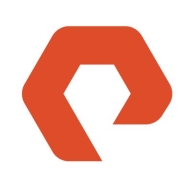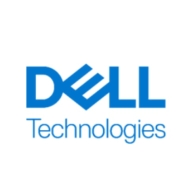


Hitachi Virtual Storage Platform and Dell PowerMax NVMe are competing in the storage solutions market. Dell PowerMax NVMe is often seen as the superior choice due to its extensive features that justify its higher cost.
Features: Hitachi Virtual Storage Platform includes non-disruptive migration, high availability, and data mobility, creating a reliable foundation for continuous cloud infrastructure. Dell PowerMax NVMe offers top-tier performance with deduplication, compression, and NVMe efficiency, along with advanced features like CloudIQ for predictive analytics.
Room for Improvement: Hitachi faces criticism for its complex user interface, inadequate automation, high pricing, and lackluster tech support. Users seek improvements in deduplication, data management, and regional support. Dell PowerMax NVMe's primary concern is its high cost, with users wanting enhanced management tools, newer tech integrations, and competitive pricing.
Ease of Deployment and Customer Service: Hitachi offers on-premises and hybrid cloud deployment but with complexity. Local support is praised, but general tech support is criticized. Dell PowerMax NVMe provides diverse deployment options and reliable technical support, ensuring smooth implementation processes.
Pricing and ROI: Hitachi Virtual Storage Platform is competitively priced with bundled licensing but becomes costly post-discount. Its reliability yields good ROI despite the high initial cost. Dell PowerMax NVMe, albeit expensive, offers effective ROI by system consolidation and performance improvement, though some find support costs disproportional.



Pure Storage FlashArray//X is the world’s first enterprise-class, all-NVMe flash storage array. It represents a new class of storage – shared accelerated storage, which is a term coined by Gartner – that delivers major breakthroughs in performance, simplicity, and consolidation.
Dell PowerMax is the industry’s most secure mission-critical storage platform. With NVMe Dynamic Fabric technology, PowerMax breaks from traditional storage limitations, enabling seamless integration with cloud-native and legacy applications. Designed with a powerful scale-up and scale-out architecture, PowerMax supports mission-critical applications at scale with zero downtime and ultra-low latency. The latest PowerMaxOS 10 release harnesses AI-driven efficiencies for trusted performance, capacity, and security. By choosing PowerMax, you can trust in a secure, intelligent, and always modern storage solution that unlocks the full potential of your data to drive business success.
RETHINK YOUR DEFINITION OF SPEED AND PERFORMANCE
With adaptive, guaranteed data reduction and a 100% data-availability guarantee, Hitachi Virtual Storage Platform F series helps you tackle complicated business challenges. Hitachi Data Systems (HDS) VSP F series delivers up to 4.8M IOPS with sub-millisecond response times.
Featuring legendary Hitachi reliability, VSP F series arrays are backed by the industries only 100% availability guarantee. For these reasons, 80% of the Fortune 500 choose Hitachi all-flash arrays to accelerate the performance of mission-critical applications like Oracle, SAP, Virtualization, Microsoft apps etc. With over 350 patents in flash technology, Hitachi’s innovative mix of flash hardware and software accelerates ROI with enterprise-class reliability and performance.
We monitor all All-Flash Storage reviews to prevent fraudulent reviews and keep review quality high. We do not post reviews by company employees or direct competitors. We validate each review for authenticity via cross-reference with LinkedIn, and personal follow-up with the reviewer when necessary.